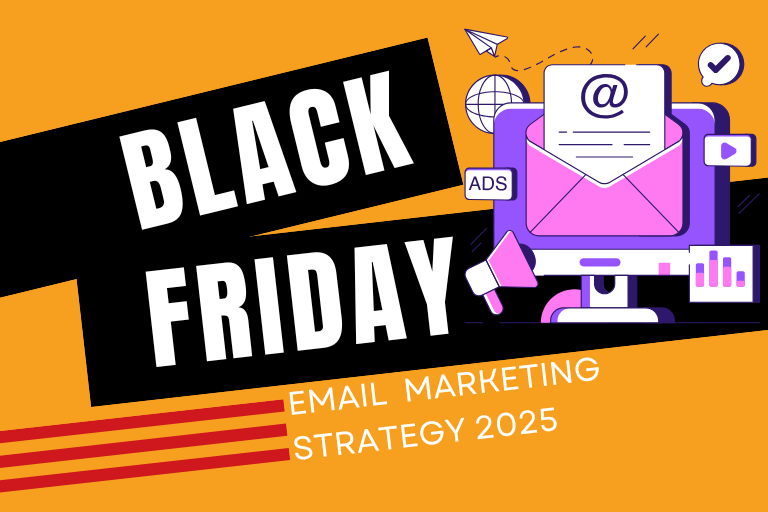If you are reading this, we can correctly assume you already know how powerful email marketing is. However, to fully tap the potentials of email marketing, the details and strategies must be applied correctly.
One of those details is personalization. Let’s face it; sending generic emails is no longer enough to capture attention, or drive meaningful results.
That is where customer segmentation comes in. You must have heard about customer segmentation as a strategy on its own, or as a tip under personalization.
Maybe you’re wondering what exactly customer segmentation is and how it works, or you just want more details on the subject. Whatever the case, let’s start with understanding what it is.
What is Customer Segmentation?
Customer segmentation is a powerful strategy that allows marketers to divide their audience or email recipients into distinct groups, based on shared characteristics, and tailor their email campaigns accordingly.
With this strategy, it doesn’t really matter if you are a small business owner or a seasoned ecommerce business manager. It simply works.
Mastering customer segmentation can unlock higher open rates, promote better engagement, and increase conversions.
Rather than treating your audience as a single person or group, segmentation recognizes that different customers have unique needs, interests, and behaviors.
Why Customer Segmentation Matters
Segmentation isn’t just about dividing your list, but more about understanding your audience and crafting emails that resonate with them on a personal level.
According to a study by Mailchimp, segmented campaigns result in 14.31% higher open rates, 100.95% higher click-through rates, and 9.37% lower unsubscribe rates compared to non-segmented campaigns. There’s more and we are happy to delve into them.
1. Increased Relevance
Customers are bombarded with emails daily, even from senders they do not wittingly subscribe to. With segmentation, you can cut through the noise by delivering content that aligns with their interests or needs.
Sure your ecommerce business has a lot of exciting offers and products, but you have to accept that not everything appeals to everyone.
Using segmentation will ensure your customers and potential ones take your outreaches seriously, as they will be convinced whatever you send out applies to them. That increases and improves customer engagement, which brings us to the next point.
2. Improved Engagement
When your email recipients feel understood, they’re more likely to open, read, and even respond to your emails if you craft your mails to elicit responses.
With repetitive emails about an offer or products that appeal to a particular demographic, you are bound to get your customers’ trust with time.
The good thing about gaining such trust is how difficult it is to erode. Think of the brands that appeal to you now, or the ones that got your trust back when you were a child as examples.
3. Higher ROI
A straight line can be drawn from your customer engagement improving to getting higher returns on your investment.
That is simply because the more customers engage, the better they get to know and trust your brand and products. This directly leads to conversions and more sales, hence the substantial increase in ROI.
Remember, most of your customers are online as your business is digital, which means you will have to rely a lot on customer referrals.
You can also draw another straight line from better engagement to higher referrals, which translate to even higher ROI. Simply put, personalized emails drive more conversions, making your marketing budget go further.
4. Reduced Unsubscribers
With proper implementation of email segmentation, you greatly reduce the risk of having subscribers angrily click on the unsubscribe icon due to getting annoying and irrelevant emails.
Some could simply mark your mail as spam and their email app does the rest, by simply dumping further mails directly to their spam box. You can easily avoid this by properly segmenting your customers.
Also, segmentation here helps you know what number of customers are interested in what product or offer. This helps your business know where to put in more work.
5. Better Customer Insights
Segmentation helps you learn more about your customers, which in turn help you make decisions based on collected and analyzed data.
With frequent tweaks and corrections, segmentation will transform your email marketing strategies from a rambling approach into a precision tool.
Now you know why segmentation is so relevant, let’s take a closer look at it forms.
Types of Customer Segmentation
To segment effectively, you need to decide which criteria matter the most for your business. Here are common types of customer segmentation, and the examples we have added for better clarity.
1. Demographic Segmentation
The basic criteria for this include age, gender, income level, occupation, education, and marital status. A luxury jewelry brand might target high-income women aged 30-50 with exclusive offers, while offering budget-friendly options to teenage and younger customers.
With this approach the brand doesn’t focus on one set of customers, while missing out on a whole demographic of young people.
This is ideal for businesses with products that appeal to specific demographic groups.
2. Geographic Segmentation
From the name, it is obvious this deals with location, climate, urban vs. rural, and time zone.
A good example is if your business retails clothes. You should promote winter coats to subscribers in colder regions like the UK, while advertising light wears to those in tropical climates like Nigeria.
Moreover, it will ensure you don’t sell products that are banned in certain places to such locations, to avoid your ecommerce platform getting blacklisted.
3. Behavioral Segmentation
Using data like purchase history, browsing behavior, email engagement, cart abandonment, etc, you can sort your customers into groups based on who buys what and when.
A good example here is a stationery business sending restock reminders to parents when school is about to resume.
This is highly effective for re-engagement campaigns, or personalized recommendations.
4. Psychographic Segmentation
The lifestyles, values, interests and personality traits of customers can be a sales tool if you get to know and sort them.
An online store that deals on fitness equipment could segment its list into gym enthusiasts and casual exercisers.
They can then send emails on workout tips to the former, and beginner guides to the latter. This works great for brands with diverse customer motivations.
Depending on your line of business, craft relevant segments for customers, after which you move to the next phase which is implementation.
How to Implement Customer Segmentation in Email Marketing
Now you are ready to get started, here is a step-by-step guide to implementing customer segmentation email marketing effectively.
1. Define Your Goals
Before segmenting, it is important you clarify what you want to achieve. Are you aiming to increase sales, re-engage inactive subscribers, or promote a new product?
Whatever your aim is, it should shape your segmentation strategy. We suggest you take on one goal at a time, till you can comfortably handle multiple segments of customers.
2. Collect and Analyze Data
Segmentation relies on well detailed data, leaving nothing to luck or hope. We highly recommend you gather information from signup forms, browsing behavior, purchase history, etc.
These data usually carry details of customers including location, age, preferences, marital status, and others.
Ask subscribers for details like age, location, or preferences using signup forms. Remember to keep sign up forms short, to avoid boring or annoying your customers.
3. Choose Segmentation Criteria
Remember the goals and data stated in the first and second steps? This is where you use the data collected and analyzed to sort and divide customer groups to fit them.
Start simple with groupings based on location and age, then add more and refine as you collect more customer information.
4. Use Email Marketing Tools
Most email platforms, like Mailchimp, HubSpot, and Klaviyo come with built-in segmentation features.
You can manually create segments, or use automation to tag subscribers based on your set criteria.
5. Craft Tailored Content
Craft emails that speak directly to each segment. The tone and language should appeal to the segment it is addressed to.
For example, using hiphop and pop language and slangs for teenagers will work, same with using more formal and corporate language for an older audience.
6. Test and Optimize
Always run A/B tests to see which segments and messages perform best. Use metrics like open rates, click-through rates, and conversions to fine-tune your approach.
We encourage you to continue fine-tuning, even when you feel you have gotten the best results. This will help you explore even better options and tips you didn’t know could work.
Also Read – Omnichannel Marketing Strategies
Conclusion
Customer segmentation is becoming the backbone of successful email marketing. This is mainly due to the continuous improvement of personalisation features by email marketing software.
Remember to leverage the right tools, and continuously refine your approach based on data.
If you need better clarity or ideas to grow your ecommerce business, you should book a FREE discovery call with us right away.



